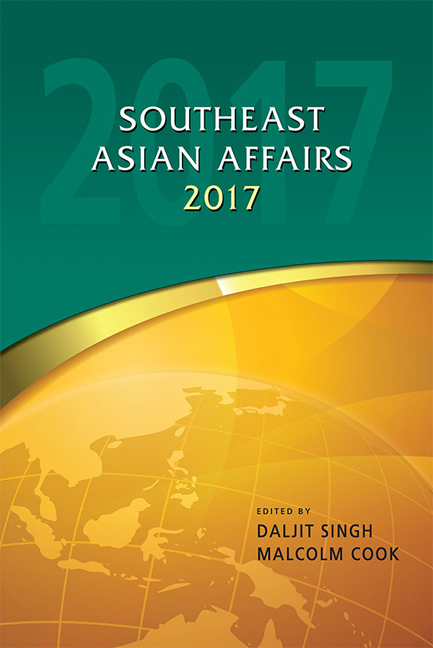Timor-Leste in 2016: Redefining Democracy
from TIMOR-LESTE
Published online by Cambridge University Press: 12 January 2018
Summary
In the lead-up to presidential and parliamentary elections in 2017, Timor-Leste in 2016 occupied a seriously ambivalent political space. The ambivalence arose from what appears to be the aspiration for national unity and the actuality of what appears to be the end of opposition politics in Timor-Leste, and therefore a possible diminution of democratic representation. The creation of a Government of National Unity (GNU) in February 2015 set up what Arend Lijphart has termed a “consociational democracy” in Timor-Leste, an arrangement where the opposition, in effect, surrenders that role and possibly the opportunity to replace the government at the next national elections in return for a share in government. It is an arrangement between previously rival leaders and their parties, where national elites agree to share power. This is a type of “controlled democracy” intended to replace political conflict with political cooperation. What it actually may entail is a loss of accountability and transparency and a consequent tendency towards political collusion, or worse.
The Redefinition of East Timorese Democracy
To understand the operation of national politics in Timor-Leste in 2016 it is necessary to consider again the major changes to the political system that occurred in 2015. These have been reviewed by Maj Nygaard-Christensen in Southeast Asian Affairs 2016, but they will be further discussed here in order to explain the transition that the country is undergoing between the formation of the GNU in February 2015 and the expected presidential and parliamentary elections in 2017.
In its second year of operation, the Sixth Constitutional Government continued to redefine democracy in Timor-Leste. This redefinition began on 6 February 2015 when Xanana Gusmão resigned as Prime Minister. He appointed as his successor Dr Rui Maria de Araújo, who on 16 February was sworn in to lead a Government of National Unity. Araújo is a senior member of FRETILIN, the party that formed the government upon independence but lost power in the 2007 election to the CNRT. The CNRT was created in that year by then President Gusmão as his vehicle to win the Prime Ministership and replace the FRETILIN government with his own.
- Type
- Chapter
- Information
- Southeast Asian Affairs 2017 , pp. 387 - 404Publisher: ISEAS–Yusof Ishak InstitutePrint publication year: 2017



